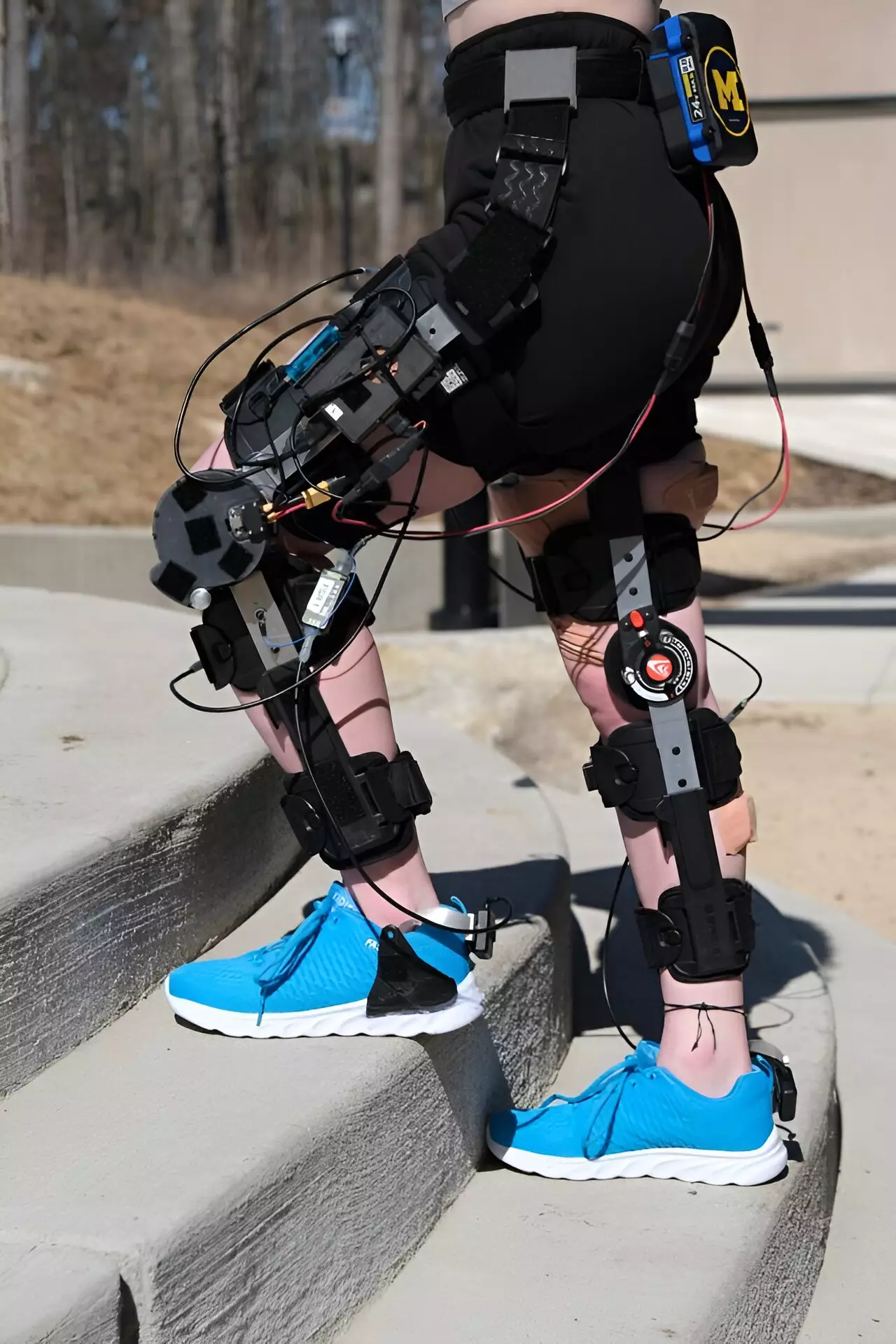In the realm of occupational health and safety, innovation is key to protecting workers from the physical toll of repetitive lifting and carrying tasks. A groundbreaking study conducted by researchers at the University of Michigan has introduced knee exoskeletons as a promising solution to combat fatigue and improve posture in strenuous lifting situations. Published in the esteemed journal, Science Robotics, this research showcases how these exoskeletons, which utilize commercially available knee braces in conjunction with drone motors, represent a shift in ergonomic assistance.
Traditional support devices, such as back braces, often focus on stabilizing the back, which can inadvertently promote poor lifting habits and increase the risk of injury. Robert Gregg, a leading professor of robotics at the university, argues for a new paradigm. Rather than simply reinforcing the back, the Michigan team’s knee exoskeletons target the quadriceps — the critical muscles involved in safe squat lifting. This approach not only helps maintain proper lifting posture but also does so in a less intrusive manner compared to bulky back exoskeletons.
Unlike many existing devices that assume a compromised posture, these knee exoskeletons allow for dynamic movement, ensuring that users can maintain a natural and safe lifting form, even when fatigue sets in. This technological innovation is essential in fields such as construction and manufacturing, where workers frequently encounter physically demanding tasks.
The practical efficacy of the knee exoskeletons was rigorously tested through a series of experiments involving ten participants who engaged in various lifting tasks using a 20-pound kettlebell. The tasks were designed to mimic real-world conditions, including lifting from the ground, carrying on flat surfaces, and navigating inclines and stairs. Remarkably, participants demonstrated improved posture and retained their lifting speed, performing just 1% slower than their pre-fatigued pace while using the exoskeleton. In comparison, their performance without the device plummeted by 44%, underscoring the exoskeleton’s substantial benefits in reducing fatigue-related posture deterioration.
Participants’ subjective assessments corroborated the objective findings, revealing high satisfaction levels with the device’s performance. Notably, the only area of concern involved movement over flat surfaces, where the exoskeleton offered less assistance due to the minimal need for quadriceps engagement. Nonetheless, the feedback indicates strong potential for widespread adoption among workers facing similar challenges.
A standout feature of these knee exoskeletons lies in the sophisticated motor design and control software that facilitate their seamless operation. The motors enable a natural knee swing, allowing users to move without restrictions or abrupt adjustments. Additionally, the device’s software employs real-time data analysis, gathering measurements from the knee joint, thigh, and lower leg. By operating at 150 cycles per second, the exoskeleton can effectively predict the user’s intended movements and provide the appropriate level of assistance.
In contrast to traditional exoskeleton systems that may operate on fixed patterns and struggle with dynamic task switching, this innovative approach incorporates machine learning algorithms to enhance adaptability. Such technology allows the exoskeleton to respond fluidly to user movements, preventing delays and ensuring safety during transitional phases between tasks.
The economic feasibility of bringing these knee exoskeletons to the market is an encouraging prospect. Current lab prototypes are priced at approximately $4,000 per pair; however, researchers anticipate that mass production could lower costs to around $2,000 per unit. As the team at the University of Michigan seeks partnerships for commercialization and navigates patent protection, the future for this technology looks promising.
Knee exoskeletons stand at the forefront of enhancing worker safety and operational efficiency. By shifting the focus from back support to leg assistance, this innovative technology not only mitigates fatigue but also promotes better lifting practices. As industries continue to grapple with the complexities of workplace injuries, solutions like these could redefine safety standards and reshape the future of physical labor.


Leave a Reply